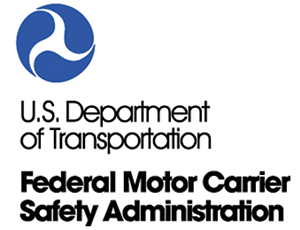Senior Reporter
FMCSA Medical Experts Working to Update Medical Examiner Handbook
A panel of medical experts advising federal trucking regulators are working to revive a defunct 260-page handbook for medical examiners who give physicals to drivers that had been used as if it were mandated rather than for guidance.
“Since its publication, medical examiners and stakeholders have utilized the handbook as a reference, applying information as if it were regulation,” the Federal Motor Carrier Safety Administration said in a recent statement to its medical review board. “This raised questions about the applicability to the physical qualification standards.”
Thus, FMCSA removed the Medical Examiner Handbook from its website in 2015, the statement said.
The ultimate standard that the board and agency should have is that we be protective of families driving in front of 18-wheelers
Albert Osbahr
But now the agency’s medical review board has begun discussing the handbook page by page to “establish, review and revise” medical condition standards for operators while attempting to mitigate potential liability for physicians and the FMCSA.
In doing so, the five-member board is walking a tight rope: attempting to advise the agency’s 50,000 certified medical examiners of “best practices” on when to prohibit unhealthy or unsafe drivers from getting behind the wheel while avoiding giving instructions that could be mistaken as regulations.
Christine Hydock, chief of FMCSA’s Medical Programs Division, said the handbook is intended to offer “best practices, guidance and recommendations” but is “not regulatory in nature.”
She told Transport Topics: “We wanted it to become framed in a way that it does not come across as a regulatory standard.”

Some of the most significant issues the board will consider updating will include what advice to offer medical examiners for evaluating such medical conditions as obstructive sleep apnea, insulin-dependent diabetes and epilepsy and seizure disorder as well as how to ensure drivers aren’t taking dangerous mixes of potent narcotics.
FMCSA is in the midst of developing a final rule that will detail a standard for drivers with diabetes that could remove the exemption process for the condition, sending full authority for evaluating diabetic drivers to examiners. It’s still unclear whether the agency will adopt the medical review board’s earlier recommendations for apnea standards into the handbook.
FMCSA withdrew a joint advance notice of proposed rulemaking with the Federal Railroad Administration in August on evaluation of safety-sensitive personnel for moderate to severe obstructive sleep apnea, saying the agency believes that “current safety programs and FRA’s rulemaking addressing fatigue risk management are the appropriate avenues to address OSA.”
The medical examiner’s handbook describes 13 standards used to determine driver’s medical fitness for duty. Four of the standards — vision, hearing, epilepsy and diabetes — have objective disqualifiers that do not depend on medical examiner clinical interpretation. For the other nine “discretionary” standards, the examiner makes a clinical judgment in accordance with the physical qualifications required for driver certification.
Larry Minor, FMCSA associate administrator for policy, said the review process will be challenging — and others agreed.
“The ultimate standard that the board and agency should have is that we be protective of families driving in front of 18-wheelers,” said Albert Osbahr, a board member and medical director for Occupational Health Services at Catawba Valley Medical Center in North Carolina. “Because of the need to have a job [and] the hubris that is out there, and the lack of insight that continues to push people out on the road when they do have health problems, really is a huge concern for me.”
Osbahr estimates he has given 10,000 exams to truckers.
“I’ll be honest with you, the safety risk is the last thing most of the truckers that I see face to face are concerned about. They’re concerned about their jobs.”





